By Gary Bowker
Lessons not learned are doomed to be repeated. As the “The Ol’ Professor” Francis L. Brannigan said, “The building is your enemy; know your enemy!” This is especially true regarding the parapet. Let’s take a look at the parapet, some of the dangers it presents, and ways to reduce the risk it poses during firefighting.
Figure 1. The Parapet
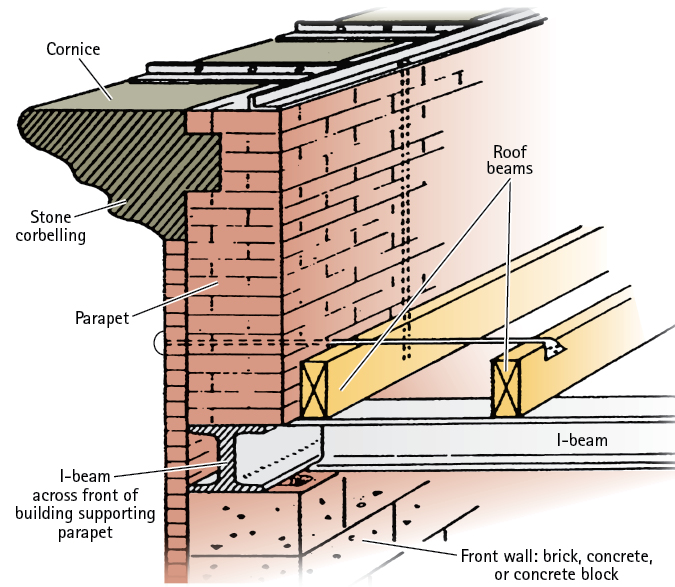
Source: Howard J. Hill, Failure Point: How to Determine Burning Building Stability, Fig. 2-20, pg. 47, Fire Engineering Books, 2012.
Parapet
A parapet is a portion of a masonry wall that rises above the roofline of a building. Typically, parapets are found in ordinary construction (Type III) buildings and are common to large cities and small towns across America. Ordinary construction buildings have historically presented recurring issues of rapid fire spread throughout the cockloft, an increased backdraft potential, and parapet instability. A parapet may serve a number of functions. It may be a fire wall that helps prevent fire spread from one building section to another as part of a fire wall (photo 1) or be decorative and used to hide rooftop equipment along the front and sides of a building (photo 2). Parapets are freestanding and may extend three or more feet above the roof deck; they do not withstand lateral loads very well. The taller the parapet, the more easily it may become unstable.
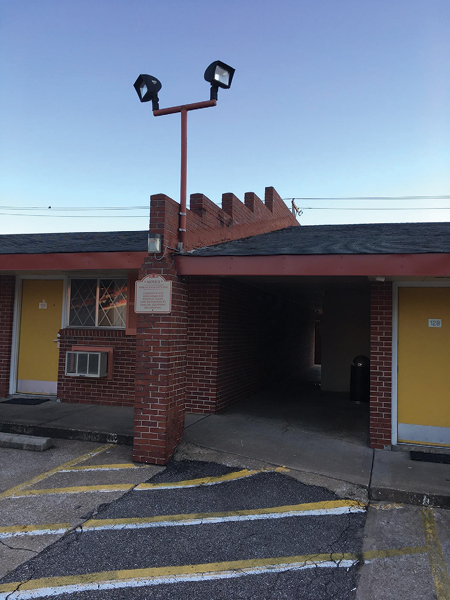
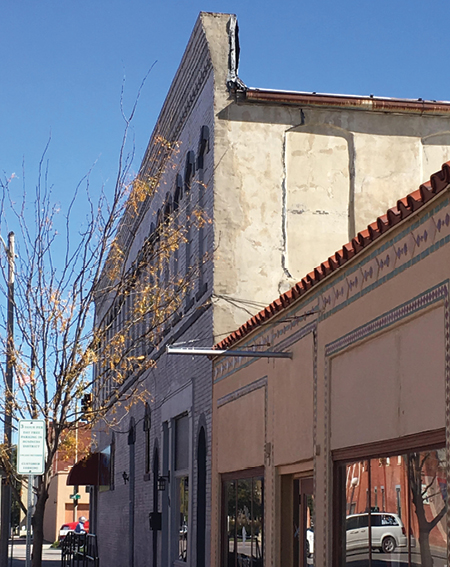
(1) Photos by author unless otherwise noted.
The parapet typically sits atop a steel I-beam. The two adjoining masonry side walls also have steel I-beams, called purlins, resting on the top of the walls along their lengths that support the roof structure. The presence of steel I-beams poses a serious wall collapse danger during a fire. To give the freestanding parapet added stability, steel anchoring rods are often bolted to the front side of the masonry wall and then anchored to structural roof-supporting members behind the wall. The presence of steel anchoring plates on the front side of a masonry wall indicates that steel rods are present and should be a warning to firefighters (photo 3, Figure 1). In some older buildings, the anchoring plates may be round or star shaped.
Parapet Dangers
Under fire conditions, parapets can collapse without warning and with deadly consequences, as experience has taught us. We must teach and reinforce this lesson to today’s firefighters. Firefighters and officers alike must develop and maintain a keen sense of situational awareness of this old fireground danger. The extent and location of the fire are critical. Uncontrolled fire involvement between floors or in the cockloft space is a red-flag warning; as a result, firefighting operations should be moved into a defensive mode. Why? Because this is the location of the parapet’s steel structural supporting members and wall-anchoring system.
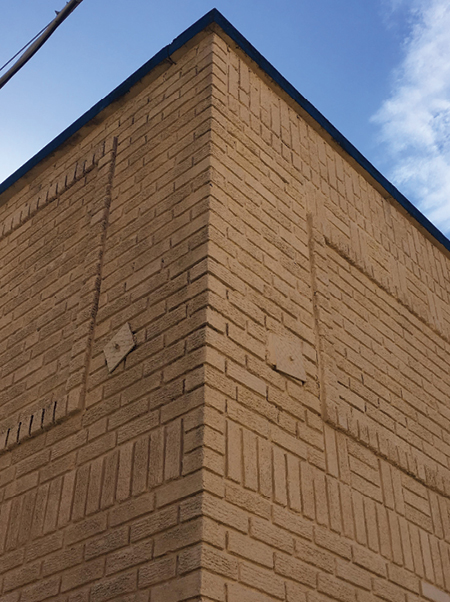
Under fire conditions, a 50-foot steel I-beam when heated to 1,000°F will expand approximately four to five inches in length. This lateral expansion of the heated steel beam produces more than enough force to push the parapet outward, causing it to collapse in the street or rear alley (photo 4). It is absolutely essential that once firefighting operations become defensive, command establish and enforce a collapse zone 1½ to two times the height of the wall. This will allow wall debris that may bounce outward to stay within the collapse zone.

(4) Photo courtesy of the Pittsburg (KS) Fire Department.
Every component of a building has the potential to affect another part. The failure in one area can contribute to the failure in another. A working fire at one end of a building could produce a wall collapse at the opposite end. Elevated carbon monoxide levels in adjoining occupancies, heavy concentrations of heat and smoke in cocklofts, and sealed-off upper floors make this type of construction susceptible to backdrafts and smoke explosions, which will produce sufficient force capable of collapsing walls. In addition, fire-weakened parapets may have an additional risk of collapse because of weather- and age-related deterioration and from suspended loads such as signs, awnings, and marquees attached to the exterior of the wall. During a fire, the building is under a constant state of change and destruction.
On July 28, 2002, Fire Department of New York (FDNY) units were operating at a fire in a building of ordinary construction in Manhattan when the incident commander realized the fire in the cockloft would not be controlled quickly and ordered crews out of the building. Forty minutes later, the front parapet collapsed without injury or loss of life to firefighters. In another incident on April 4, 1956, the FDNY tragically lost six firefighters at a furniture store fire when the parapet collapsed (photo 5).
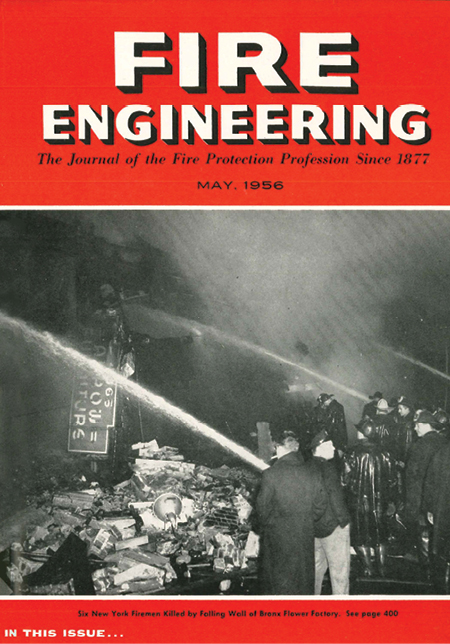
(5) Photo courtesy of Fire Engineering.
Reducing the Risk
Ordinary construction buildings with parapets are in almost every community in the United States. Firefighters must know what and where these kinds of risks are in their communities. That is the first step in preparing to manage that risk effectively.
The following are some key points for fire officers:
- Establish and implement written standard operating procedures regarding emergency operations on the fireground.
- At a structure fire, continuously monitor the building for its collapse potential and signs of impending failure.
- Establish and clearly identify a collapse zone at structure fires involving buildings susceptible to collapse, and enforce it.
- Complete preemergency planning for all mercantile and business occupancies.
- Appoint a separate incident safety officer independent from the incident commander.
Gary Bowker is a United States Air Force master sergeant (ret.) and served as fire chief at numerous U.S. Air Force bases around the world. He was the chief of Sumner County (KS) Rural Fire District #10 and served as the fire marshal and the safety officer for Winfield, Kansas. Bowker has more than 43 years of fire service experience and has instructed at FDIC, the National Fire Academy, U.S. Department of Defense, and University of Kansas Fire & Rescue Training Institute.

